Science Daily News | 12 Jul 2023

Views (100)
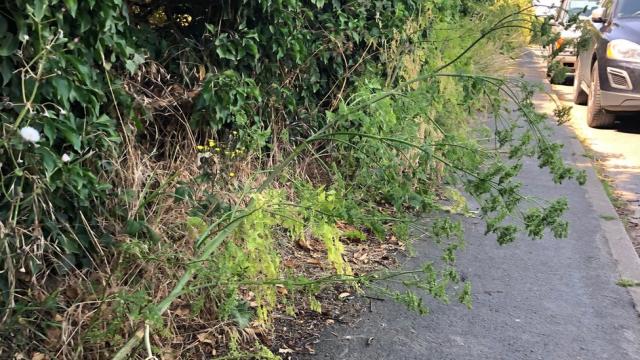
Blue Origin’s next-gen BE-4 rocket engine fails dramatically during testing in Texas
Jeff Bezos’ Blue Origin space venture confirmed that one of its BE-4 rocket engines suffered a significant anomaly during testing at its West Texas facility in late June. The incident first came to light today in a report from CNBC, which quoted unnamed sources as saying that the engine detonated about 10 seconds into a test firing on June 30. CNBC said the engine was meant to be used for the second launch of United Launch Alliance’s next-generation Vulcan rocket. That launch, known as Cert-2, i
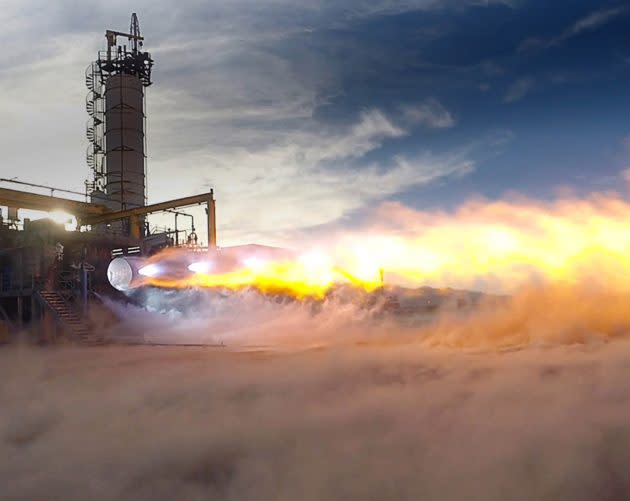
The cause of last month’s anomaly is under investigation, Blue Origin said today in an emailed statement:
“In late June, we ran into an issue while testing Vulcan’s Flight Engine 3 at our West Texas facility. No personnel were injured, and we are currently assessing root cause. ULA was immediately made aware. The West Texas test facility is able to continue testing at the site. We already have proximate cause and are working on remedial actions. We will be able to meet our engine delivery commitments this year and stay ahead of our customer’s launch needs.”
Metal clouds turn scorching hot exoplanet into the universe's largest mirror
The CHEOPS exoplanet hunter has found a distant world so hot that it has clouds of metal making it the most reflective planet ever seen.
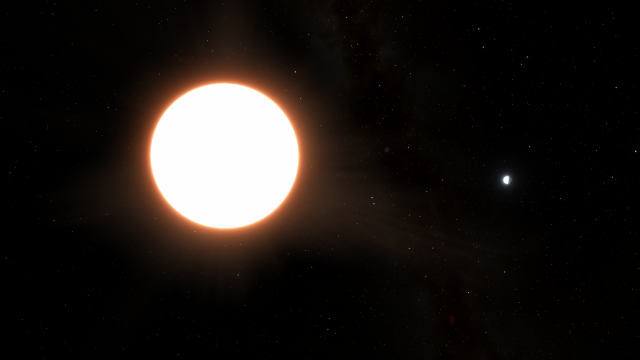
Astronomers have discovered the most reflective planet outside the solar system ever seen. The ultra-hot extrasolar planet, or exoplanet, acts like a cosmic mirror because it is covered by reflective clouds of metal.
Initially, the high reflectivity of LTT9779 b, a quality known as 'albedo,' was a mystery to scientists. This is because most planets, other than ice worlds or planets with reflective cloud layers like Venus, have low albedos as a result of their atmospheres or surfaces absorbing starlight, thus preventing it from being reflected back into space.
LTT9779 b was predicted to have a low albedo because, with a surface temperature of around 3,650 degrees Fahrenheit (2,000 degree Celsius) on the side of the exoplanet that permanently faces its star, it should be too hot to form clouds of water. This high temperature should make LTT9779 b too hot even for even clouds of metals or glass to form.
"It's a planet that shouldn't exist," says research co-author and Observatory of Côte d'Azur researcher Vivien Parmentier. "We expect planets like this to have their atmosphere blown away by their star, leaving behind bare rock."
The existence of such a planet prompted researchers to explore other theories for how these metal clouds formed. "It was really a puzzle until we realized we should think about this cloud formation in the same way as condensation forming in a bathroom after a hot shower," Parmentier added. "To steam up a bathroom, you can either cool the air until water vapor condenses, or you can keep the hot water running until clouds form because the air is so saturated with vapor that it simply can't hold anymore."
The team thinks that LTT9779 b got its metal clouds and its high albedo when its atmosphere was oversaturated with silicate and metal vaporized by scorching hot temperatures on the planet's permanent dayside.
The reflective nature of LTT9779b isn't its only extraordinary quality, however. The exoplanet is also an example of a planetary type that has eluded astronomers for decades and remains mysterious.
As an ultra-hot Neptune which orbits so close to its star, LTT9779b is the first in a population of "missing planets" to be discovered. Planets of this size and mass, which orbit close to their parent stars, have been long-absent from the exoplanet catalog, which now contains over 6,000 worlds.
This left an absence of planets with sizes and mass in between these categories at close proximities to their stars. An absence that has come to be known as the "hot-Neptunian desert" by scientists.
With a size just larger than its ice-giant namesake and a 19-hour orbit, LTT9779 b sits firmly in this gap.
RELATED STORIES:
The planet's survival in the hot-Neptunian desert so close to its star could share an explanation with its high reflectivity characteristic.
LTT9779 b is likely to be the focus of extensive study over the coming years, with the exoplanet representing a fine observational target for both the James Webb Space Telescope and the Hubble Space Telescope. This should allow scientists to better understand its atmosphere, clouds, and its other characteristics.
The Anthropocene: Canadian lake mud 'symbolic of human changes to Earth'
Scientists want to use sediments in Crawford Lake as a signifier for a new epoch in geological time.
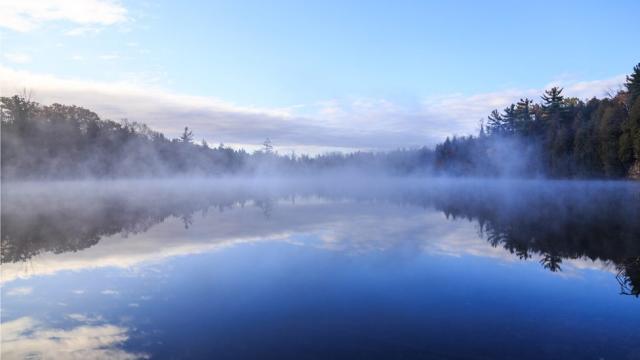
Crawford Lake, a small body of water in Ontario, Canada, is being put forward as the location that best records humanity's impacts on Earth.
Its sediments have captured fallout from intense fossil fuel burning, and even the plutonium from bomb tests.
Other great transitions in geological time are associated with a GSSP. Often, it's literally a brass nail hammered into some cliff face deemed to be of major scientific importance.
But for Crawford, it would be a brass plaque next to a frozen section of the sediments, kept in a museum in the Canadian capital, Ottawa.
"Crawford is just brilliant for this," explained Dr Simon Turner from University College London.
"A core from its bottom muds looks like a massive dirty lollipop, but it contains these beautiful, annually laminated sediments.
"Those annual layers record fossil fuel combustion products, plutonium, changes in geochemistry, changes in micro-ecology - all the sorts of things that chart environmental change," the secretary to the Anthropocene Working Group (AWG) told BBC News.
Its blocks of time - like Triassic, Jurassic and Cretaceous - trip off the tongue.
We currently live in the Holocene Epoch, which covers the time from the end of the last ice age, 11,700 years ago.
It's been the job of the AWG for the past decade to try to establish whether or not the chart should be updated.
This decade marks the beginning of the "Great Acceleration", when the human population and its consumption patterns suddenly speeded up. It coincides with the spread of ubiquitous "techno materials", such as aluminium, concrete and plastic.
In Crawford's sediments, scientists are able to detect the quickening, year on year.
In warm summer months, the growth of algae prompts the lake water to produce tiny chalk crystals (calcite) that fall to the lake bottom as a white layer; in cold winter months, the algae and other organisms die back and their organic matter settles out as a brown/black layer.
But captured within these light-dark bands are the broader environmental changes around the lake.
It's almost as if the scientists are reading a barcode at a supermarket check-out.
"We see these spheroidal carbonaceous particles - 'fly ash' - that are produced by the very high temperature combustion of fossil fuels, primarily coal," said Prof Francine McCarthy from Brock University in St Catharines, Ontario.
"And the reason, of course, for the increase in these SCPs is that just a few 10s of km up wind from Crawford is the largest industrial city in Canada, Hamilton, where steel mills had been operating through most of the 20th Century and into the present day."
Another key marker - indeed, the primary marker - is plutonium.
Samples of the Crawford muds were sent to the UK earlier this year to try to determine where exactly in the muddy layers the presence of the radioactive element first appears and then ticks upward.
"We see plutonium in sediments and other materials from about 1945 onwards, relating to the atomic weapons testing programme. But really the point at which plutonium deposition went global was following high-yield thermonuclear bomb tests, starting in 1952," said Prof Andrew Cundy.
"One of the plutonium isotopes we're looking at has a half-life of 24,000 years, so it will be visible in the sediments for at least 100,000 years. Beyond that, the SCPs will still be detectable," the University of Southampton scientist told BBC News.
The AWG want to pick a specific year for the start of the Anthropocene Epoch, and the Southampton tests will influence this decision.
It's an extraordinary idea that geologists many millennia from now could be studying today's sediments to understand the profound changes earlier humans had imposed on Planet Earth.
But this is how stratigraphy - the study of layered deposits through time - is done.
Take for example Munsley Bog on the Isle of Wight, off the south coast of England.
There, if you pick the right place in the soggy ground, it's possible to pull up mud layers that record the last great epochal transition - from the Pleistocene into the Holocene.
Traces of pollen track the loss of Arctic-Alpine plants and the invasion of birch and willow, as Northern European glaciers recede and temperatures rise.
"When we look back, what we are learning is that some of these transitions can be really quick, in just 30 or 40 years; so within a generation," explained Prof Sabine Wulf from the University of Portsmouth.
The AWG will present its recommendations on establishing a new epoch to the wider geological community later this year. Ultimately, it will be up to the International Commission on Stratigraphy as to whether it wants to update its famous chart.
Northern lights unlikely to be seen across U.S. despite early forecast
The northern lights may light up skies at high latitudes this week, though likely not in cities in the lower 48 states, as previously forecast.
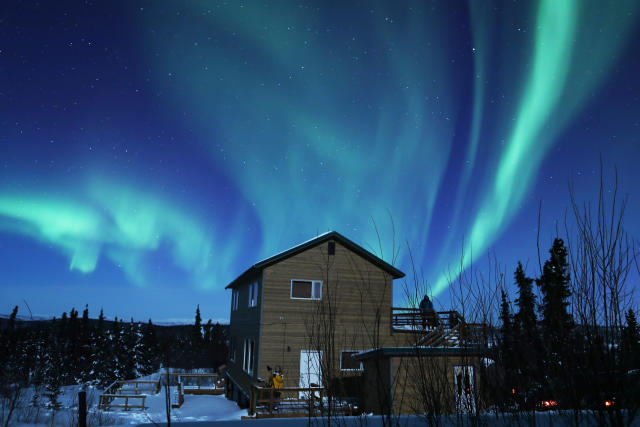
The northern lights may light up skies at high latitudes this week, though likely not in cities in the lower 48 states, as previously forecast.
“Recent predictions of auroral activity visible much further south than Alaska have been making the rounds,” Don Hampton, a research associate professor at the Geophysical Institute, said in an email. “This prediction, several days ahead of time, is based on models run by the Space Weather Prediction Center, a part of NOAA, and located in Boulder, Colorado. The Geophysical Institute does not make long-term auroral predictions. Our aurora forecast is from SWPC.”
He noted that the models are based on a limited number of input measurements that track activity on the sun and the space between the sun and the Earth.
“There are only a few satellites and instruments dedicated to collecting these data, so the models typically have a wide range of predictions since the observations are relatively sparse,” Hampton wrote. “While large solar storms can be seen leaving the vicinity of the sun, and their direction and speed can be estimated, once they leave the local solar vicinity they cannot be tracked. During this time the solar storms can be slightly diverted or even reduced, and the final impact on Earth’s magnetic field may be different than predicted.”
Lt. Bryan Brasher, a project manager at the Space Weather Prediction Center, said it regularly produces a 27-day outlook of solar activity and that, roughly two weeks ago, it did include the possibility of a moderate disturbance of Earth’s magnetic field.
But these outlooks only give a rough idea of what could play out, he said, adding that aurora forecasts can only be reliably made when the hallmarks of solar storms are actually observed on the sun. Early projections often change or are refined by observing features of the sun as they rotate into view.
About a week ago, the center downgraded its assessment based on more up-to-date monitoring of the sun’s activity.
“Now we’re not predicting anything on the 12th or 13th,” he said. “Nothing out of the ordinary.”
Brasher said he’s not sure what caused the erroneous northern lights forecast to take off online, but added that it’s still very challenging to produce long-term predictions of space weather.
“At no point in time was anyone saying anything false,” he said. “There was a prediction out there that could have been valid. But ultimately, the prediction that was offered was already going to be a very minor storm to begin with.”
Auroras appear most commonly as shimmering displays of green light, but reddish, pink, blue and purple hues can also be seen, depending on the composition and density of the atmosphere.
The northern lights are typically seen at high latitudes, but strong solar storms can intensify the displays, making them visible in places farther south than normal.
Brasher said that while people in midlatitude states may feel disappointed this time around, there may be chances to catch the northern lights in the near future, as the sun ramps up activity.
“The sun goes through these 11-year cycles between maximum activity and minimum activity, and we are approaching the time of maximum activity,” he said. “It’s pretty much a statistical certainty that we will have more opportunities in the mid-latitude states to see auroras.”
CLARIFICATION (July 10, 2023, 11:34 p.m. ET): A previous version of this article detailed a forecast published by the University of Alaska Fairbanks that said auroral displays were expected to be visible from many U.S. cities in the lower 48 states. The university updated the forecast to remove most of those cities.
Students still struggle with math and reading despite the end of the pandemic era, study shows
Students who struggled through the height of the Covid-19 pandemic – between March 2020 and early 2023 – are still having trouble keeping up with course work, according to a study from the nonprofit NWEA, which focuses on education research.

“This analysis provides the most current evidence to help guide recovery efforts and resource allocations in support of schools,” an NWEA news release said. “While the pandemic is now deemed over, the impacts on students based on two markers, achievement in reading and mathematics, are still apparent.”
The study used data from 6.7 million public school students from grades 3-8, the release said.
The performance gap widened in some grades when comparing students affected by Covid-19 and those before the pandemic, the data showed.
“COVID-19 may no longer be an emergency, but we are very much still dealing with the fallout from the crisis,” said Dr. Karyn Lewis, co-author of the study and director of the Center for School and Student Progress at NWEA, according to the release.
“These data reiterate that recovery will not be linear, easy, or quick and we cannot take our foot off the gas pedal,” Lewis said. “Disappointing as these results may be, it’s important not to lose sight of the fact that things would likely be so much worse without the enduring work of educators and schools to support students in this moment.”
The NWEA’s recommendations include using local data to help students continue to recover, intervening as needed and communicating important information with families in a timely way.
UK poisonous plants: The dangerous plants lurking in plain sight
As concerns are voiced about hemlock near a school, an expert tells of other deadly green neighbours.

On Monday, it emerged children's lives were "at stake" in a Suffolk village after hemlock - a plant that can be fatal if ingested - was found along their normal walk into school. Hemlock, however, is far from our only green neighbour that poses a risk.
First reported to Suffolk County Council in June by parish council chairman David Brinkley, the authority has pledged to close the road and remove the offending plant.
In his call to action, Mr Brinkley says delays to the plant's removal "put children's lives at stake", with them needing to go into the road to avoid it.
Head teacher Rachael Rudge has similar concerns.
"To walk on the roads because the path isn't safe because of all the hemlock and vegetation overgrowing, they're being put in this really difficult and unsafe position," she says.
But according to Prof Iain Barr, of the University of East Anglia, the removal of the hemlock leaves a further 28,000 still dotted around the UK.
Prof Barr, a professor of field ecology, tells the BBC about a number of other dangerous plants sitting in plain sight and why some pose such a threat.
The giant hogweed - Heracleum mantegazzianum - is not to be messed with, says Prof Barr.
"If you touch it and your body reacts to it, it can cause a reaction and makes you very susceptible to sunburn," Prof Barr says. "You don't want to come into contact with any part of it."
The plant, a close relative of cow parsley, has white flowers, thick bristly stems and can grow more than 16ft (5m) tall.
Native to Central Asia, it was introduced into Britain in 1893 as an ornamental plant, but "escaped from domestication".
Toxic components in the leaves, stems, roots, flowers and seeds can be transferred to skin by touch.
It is often confused with its native relative, the common hogweed.
"That's also toxic," says Prof Barr. "But less so."
A staple favourite for a shadier spot in the garden, the much-loved foxglove's floral beauty comes with a dark side.
Foxglove - digitalis - is a source of digitoxin, a glycoside in the drug digitalis, which has been used as a heart stimulant since 1785.
It is also well-known for its toxicity in all parts of the plant.
Consuming the leaves can cause oral and abdominal pain, nausea, vomiting and diarrhoea.
In severe cases, symptoms can include visual disturbances, plus heart and kidney problems.
"People should just stand back and admire it," says Prof Barr.
"Don't eat it," says Prof Barr.
Deadly nightshade is one of the UK's most poisonous plants and just a couple of berries, which contain tropane alkaloids, would be enough to kill a person.
"It is part of the tomato family," says Prof Barr. "It can be found in woodlands, though it is not quite as common as it used to be."
Despite its deadly potential, the nerve-gas antidote atropine sulphate can be extracted from it.
"The hemlock water dropwort is very, very common around the [Norfolk and Suffolk] Broads," says Prof Barr. "It is also very toxic."
Also known as the "poison parsnip", hemlock water dropwort - Oenanthe crocata - is one of the most poisonous plants native to the UK.
Both hemlock and hemlock water dropwort are part of the carrot family, but live in different habitats and have different toxins.
Hemlock on the other hand contains five alkaloids - coniine, conhydrine, pseudoconhydrine, methyl-coniine and ethyl-piperidine - which cause violent vomiting and paralysis of the nervous system.
But how do plants become so toxic that they can kill people?
"It is all to do with chemistry and evolution," says Dr Barr. "Plants have developed toxins to avoid being eaten.
"So a plant that is slightly more toxic to a grazing animal than the ones next to it has a slight advantage.
"Over time, this process leads to a point where certain plants can become very toxic to certain species."
"If an aurochs or mammoth overgrazed, then the plant alkaloids would make it not feel very well," he says.
"It was not designed to kill them, just to make them unwell and to stop eating."
Plant toxins certainly did not develop, he says, to prevent children from walking to school.
0 Likes
